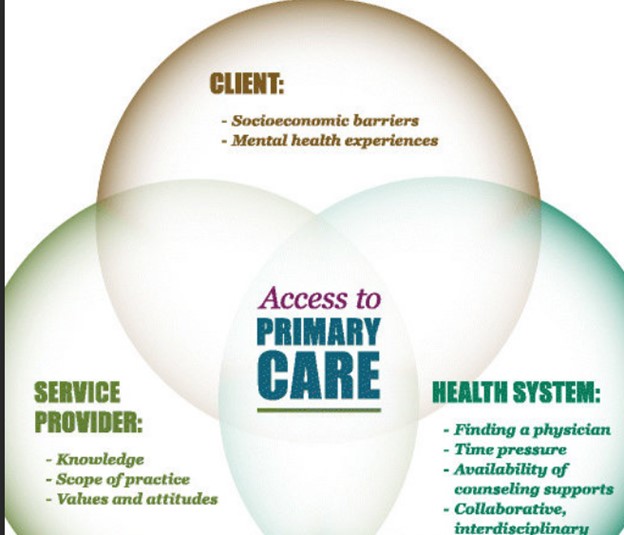Advisory: Low Barrier Models Of Care For Substance Use Disorders

Advisory: Low Barrier Models Of Care For Substance Use Disorders
Advisory: Low Barrier Models Of Care For Substance Use Disorders – Despite robust evidence demonstrating the effectiveness of medications and psychosocial treatment interventions for substance use disorders (SUDs), less than 10 percent of people who need treatment have sustained access to care.
In 2021, only 22.1 percent of people with a past year opioid use disorder (OUD) reported receiving medications for the treatment of their opioid misuse, and only 6.3 percent of people with a past year illicit drug or alcohol use disorder reported receiving any substance use treatment.1 SUDs continue to pose a significant public health challenge.
Most people who could benefit from treatment do not receive it due to systemic barriers and access issues which are even greater for historically underserved communities.
Low barrier care is a model for treatment that seeks to minimize the demands placed on clients and makes services readily available and easily accessible. It also promotes a non-judgmental, welcoming, and accepting environment.
In this way, low barrier models of care meet people where they are, providing culturally responsive and trauma informed care that is tailored to the unique circumstances and challenges that each person faces.2,3
This facilitates engagement in treatment: one recent study of a low barrier bridge clinic serving individuals with opioid, alcohol, stimulant, sedative/hypnotic, and cannabis use disorders, found that 70 percent of clients were engaged in treatment, which is higher than national averages.
Another study of low barrier buprenorphine offered at a syringe services program revealed a nearly three-fold increase in buprenorphine use (from 33 to 96 percent) and substantial declines in the use of other opioids (from 90 to 41 percent) between clients’ first and sixth visits.
Other research reveals that low-barrier care is cost-effective, reducing the need for emergency department visits and hospitalizations.
Key Messages
• Low barrier care reduces requirements and restrictions that may limit access to care and increases access to treatment for individuals with substance use disorders. This approach meets individuals where they are and helps provide culturally sensitive care tailored to the unique circumstances and challenges that each person faces.
• Research demonstrates the potential effectiveness of low barrier care in improving treatment engagement and outcomes for individuals with substance use disorders. Low barrier care can reduce the use of harmful substances and lower the need for emergency department visits and hospitalizations.
• Some approaches to substance use disorder treatment may be perceived by people who use drugs as punitive, leading to stigmatization and limited treatment engagement. Low barrier care provides a non-judgmental, welcoming, and accepting environment that encourages individuals to seek help without fear of stigma or discrimination.
• Policymakers and stakeholders must work to identify and address any inhibitors to low barrier care, including funding and reimbursement, workforce development, and regulatory policies.
• Low barrier care can increase access to treatment and improve recovery-based outcomes for individuals and communities affected by substance use disorders.
This Substance Abuse and Mental Health Services Administration (SAMHSA) Advisory outlines the principles and components of low barrier care and how low barrier care may be leveraged to overcome substantial gaps in access, while also engaging individuals in treatment.
Low barrier care for SUDs is a critical way to address the overdose epidemic and other substance use challenges. By removing barriers to care and providing evidence-based services in a non-judgmental, welcoming, and accepting environment, low barrier models of care can help to improve recovery-based outcomes for individuals and communities affected by substance use and use disorders.
Principles and Components of Low Barrier Models of Care
Low barrier models of care promote engagement and retention by placing the patient at the center of planning and decision making. Accordingly, low barrier models include flexible scheduling and walk-in services, a non-punitive approach to ongoing substance use, decreased stigma about SUD compared to traditional care settings, and incorporation of patient goals and choice into medication decisions.
The following principles and components of low barrier care highlight a patient-centered approach to care that meets the person where they are and engages them in treatment in a compassionate and person-centered manner.
Principles
1. Person-centered care: Treatment works best when the focus is on how to empower each client to achieve their goals. This requires being present to the individual, asking about, listening to, and respecting clients’ experiences, wishes, and autonomy, as well as providing individualized care to meet their needs.
Cultivating a culture of person-centered empowerment within organizations and systems is especially needed given the pervasive stigma against people with SUDs.
In the context of low barrier care for SUDs, it is crucial to support a client’s preferences for short-term versus long-term medication use (e.g., withdrawal management) as part of a patient-centered approach to treatment.
This includes providing psychosocial education so that individuals understand the risks and benefits of their decisions. Respecting individual autonomy and through a shared decision-making and informed consent process can enhance treatment adherence, promote a sense of autonomy, and improve overall outcomes.
Long-term medication use may offer stability and continuous support for clients, whereas short-term use can be instrumental in managing withdrawal symptoms and initiating the recovery process.
By ensuring effective informed consent via shared decision-making and tailoring treatment plans to align with clients’ unique needs and preferences, healthcare providers can foster a therapeutic alliance, optimize treatment efficacy, and ultimately contribute to a more successful and sustainable recovery.
READ MORE INSIDE…
Download Advisory: Low Barrier Models of Care for Substance Use Disorders Now $7

Click on the Blue Button Below for Instant Access!
Just use your name and valid email address – I will never sell or share your email address with anyone. Never. You may unsubscribe anytime. I hate spam just as much as you do.
Regards, Coyalita
Behavioral Health Rehabilitative Specialist & Addiction Counselor
Copyright © 2021-2024 Thresholdlivecoyalita.com All Rights Reserved Privacy Policy – Earnings Disclaimer – Terms of Use – Contact Us




